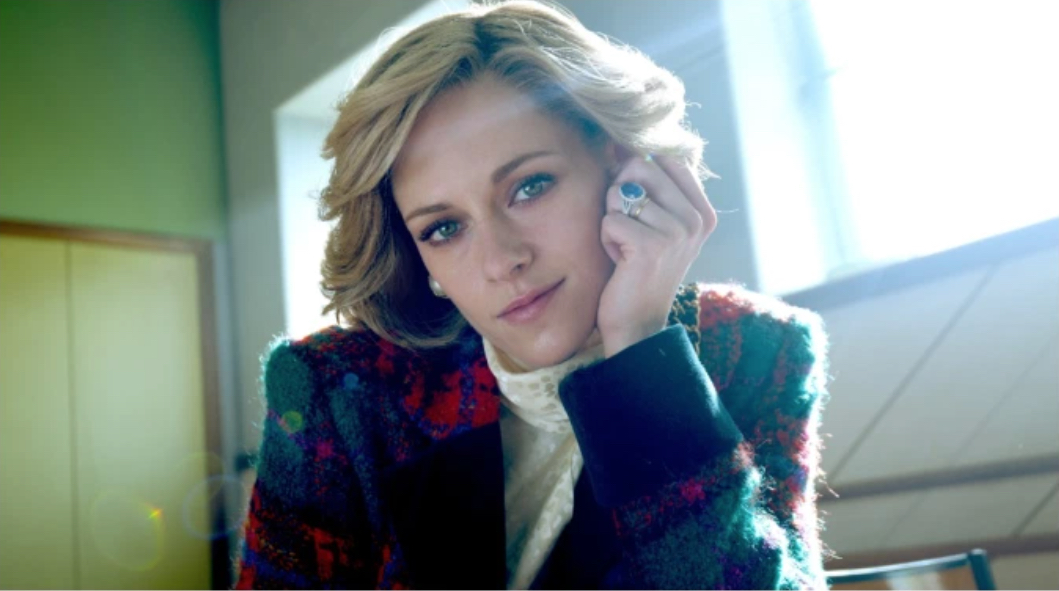(IMAGE: NEON)
RATING: 2 of 4
NEON. 2021. Biopic/Historical Drama. 111 minutes
There were different ways of looking at women in Hollywood movies during the very much male-dominated classical era of the American 1940s. Women were objects in Musicals–to be drooled over in leotards and then returned to vestal virginity as they walked offstage, so they could be fit consorts for men. They were demons in the cautionary Films Noir–death forces, with larceny in their hearts and bullets in their blood, who used their backlit and chain-smoking allure to sow destruction and mayhem by bewitching weaker males.
But mostly, women suffered, in what were even called “Women’s Pictures” back in the day. Their hearts broke, their children betrayed them, they were gaslighted, slowly poisoned, they died of arid spinsterhood. Bette Davis, Joan Fontaine, Olivia de Havilland, even wised-up ex-showgirls who knew better like Joan Crawford and Barbara Stanwyk, were all showered with Oscar nominations, and sometimes the trophy itself, whenever they enacted estrogen as agony.
Director Pablo Larrain is in the midst of reviving this hoary old tradition of female suffering, and he’s adding a soupcon of what contemporary Hollywood finds awards-worthy by using historical settings to do it. First came “Jackie,” his take on Jacqueline Kennedy-Onassis, which utilized the disjointed rhythms of art-house technique and brutalizingly close camerawork to chronicle the aftermath of the JFK assassination through the eyes of the woman who was there when the bullets struck. You think Joan Crawford suffered when her daughter double-crossed her in “Mildred Pierce”? Try Natalie Portman, shivering with disgust as she showers off the brains and blood of her inconstant husband into an unfeeling White House sewer pipe.
I liked “Jackie” sort of–it was “daring” in the comfortable way only a film about long-settled history can be. We have staid expectations of the historical film, so when one evolves into a catty lesbian love triangle, as in “The Favorite,” or takes a tabloid icon and positions her in the same appalled and baffled relationship to her celebrity the rest of us occupy (like “Jackie”), it can feel audacious and new.
There was an aftertaste to “Jackie” for me though–a sense of a movie having it both ways by exploiting the very things it seems to critique. “Spencer,” Larrain’s wildly over-praised new biopic about Princess Diana, crystallizes all those suspicions for me.
“Spencer” begins with Diana literally “lost” on a rural roadway–a harbinger of hamfistedness to come. It is 1991-ish, and in an act of petty defiance, Lady Di is driving herself to the Queen’s Sandringham Estate at Yuletide, where she will be asked to enact a Christmas Pantomime of familial tranquility with her estranged husband Prince Charles and her beloved sons Princes William and Harry on hand as props. It’s all for the benefit of the Queen and her brisk and solemn Royal Staff, for Britain needs its royals pickled on mulled wine and mince pie come the Hoganmay, lest tradition itself be trampled. Tranquility is unavailable to Diana however; she has recently become aware that her husband is cheating on her with his old lover Camilla Parker-Bowles, and is in the grips of a mental meltdown.
That meltdown informs the narrative strategies used by Larrain and his screenwriter Steven Knight, in the same loose, non-clinical manner of a William Castle horror movie like “Strait-Jacket.” Diana fantasizes about choking herself with the royal pearls; she dances with an innocent ballerina version of her younger self; she tumbles to her death down a flight of stairs. And then, as they say, she wakes up.
Mostly, Diana is haunted by the ghost of Anne Boleyn, the beheaded second wife of Henry VIII. Lest we miss a metaphor, Anne is clearly and specifically described in dialogue as a symbol of patriarchal royal abuse, and late in the game, Stewart herself materializes briefly as a Lady Di/Boleyn hybrid, like Jeff Goldblum in “The Fly.” All this lovelessness and publicity is killing her, don’t you see. It’s, you know, like having your head chopped off. Sorta.
As “Jackie” was for Natalie Portman, “Spencer” is genetically engineered to get Kristen Stewart an Oscar nomination, and it will certainly do so. The relentless intimacy of Larrain’s technique, which can barely stand to cut to a shot of another actor, assures us we are watching a great performance. So many people have said Stewart is wonderful that I hesitate to dissent, but here goes: aside from the overuse of Diana’s flinching, please-don’t-hurt-me posture from her TV interviews with Charles and Stewart’s deployment of a cut-glass Estuary English accent, Stewart is mostly called upon here to run her old “Twilight” playbook: moist-eyed with anticipated terrors, occasionally she weeps. She’s good at it–why shouldn’t she be, after so much practice?
But it’s the visual mannerisms that add all the awards-worthy portent here–the period flourishes, the endless echo-chamber poshness of palatial landscapes–and the visual mannerisms are a mask. Pull that mask down and we have a “women’s picture” about female agony, peppered with salacious details–about Diana’s bulimia and self-harm, her husband’s infidelities, and the general puzzlement of the Firm over the flowering neurosis she brought into their midst. These are narrative flourishes straight from the Gospel of Martin Bashir. As with “Jackie,” there’s a sense that “Spencer” is a Big Mac of tabloid analysis served on a sterling silver tray. It isn’t that the empress wears no clothes, but that the clothes are the circus wardrobe of the Daily Mail and The Express. “Spencer” is a movie that feeds on the corpse it seeks to sanctify.
Marilyn Monroe and Maggie Thatcher had best watch their backs.

